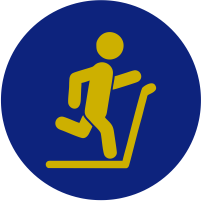Sacroiliac Joint Pain
What Is Sacroiliac Joint Pain?
It could be a dull or sharp. It starts at your SI joint, but it can move to your buttocks, thighs, groin, or upper back.
Sometimes standing up triggers the pain, and a lot of times you feel it only on one side of your lower back. You may notice that it bothers you more in the morning and gets better during the day.
It’s more common than you might think. About 15%-30% of people who hurt like this have a problem with the SI joint.
What Causes Sacroiliac Joint Pain?
The pain is caused by damage or injury to the joint between the spine and hip.
The SI joint can become painful when the ligaments become too loose or too tight. This can occur as the result of a fall, work injury, car accident, pregnancy and childbirth, or hip/spine surgery (laminectomy, lumbar fusion).
Sacroiliac joint pain can occur when movement in the pelvis is not the same on both sides. Uneven movement may occur when one leg is longer or weaker than the other, or with arthritis in the hip or knee problems. Autoimmune diseases, such as axial spondyloarthritis, and biomechanical conditions, such as wearing a walking boot following foot/ankle surgery or non-supportive footwear, can lead to degenerative sacroiliitis.
What Are The Symptoms of Sacroiliac Joint Pain?
The signs and symptoms of SI pain start in the lower back and buttock, and may radiate to the lower hip, groin or upper thigh. While the pain is usually one sided, it can occur on both sides. Patients may also experience numbness or tingling in the leg or a feeling of weakness in the leg.
Symptoms may worsen with sitting, standing, sleeping, walking or climbing stairs. Often the SI joint is painful sitting or sleeping on the affected side. Some people have difficulty riding in a car or standing, sitting or walking too long. Pain can be worse with transitional movements (going from sit to stand), standing on one leg or climbing stairs.
What Are The Treatment Options For Sacroiliac Joint Pain?
Nonsurgical treatments: Physical therapy, chiropractic manipulation, and stretching exercises help many patients. Some patients may require oral anti-inflammatory medications or topical patches, creams, salves or mechanical bracing.
Joint injections: Steroids can reduce the swelling and inflammation of the nerves. Joint injections are a minimally invasive procedure that involves an injection of a corticosteroid and an analgesic-numbing agent into the painful joint. While the results tend to be temporary, if the injections are helpful they can be repeated up to three times a year.
Nerve ablations: Injections into joints or nerves are sometimes called “blocks.” Successful SI joint injections may indicate that you could benefit from radiofrequency ablation – a procedure that uses an electrical current to destroy the nerve fibers carrying pain signals in the joint.
Surgery: If nonsurgical treatments and joint injections do not provide pain relief, your physician may recommend minimally invasive SI joint fusion surgery. Through a small incision, the surgeon places titanium (metal) implants and bone graft material to stabilize the joint and promote bone growth. The surgery takes about an hour. The patient may go home the same day or following day. For several weeks after surgery, the patient cannot bear full weight on the operated side and must use crutches for support.
Our team is here for you
We offer the best, least invasive and least aggressive options to relieve your pain and symptoms so you can get back to the life you love. Atlantic Orthopaedic Specialists Pain Management team has convenient locations in Virginia Beach, Norfolk and Chesapeake.



